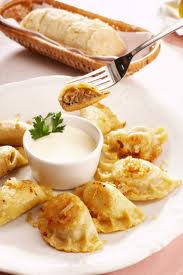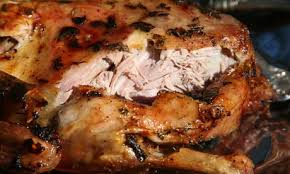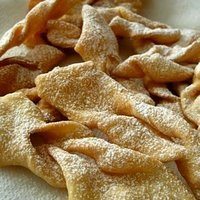Recipes from Our Poland Culinary and Cultural Tour in 2012
After the fall of the Iron Curtain in 1989, tourism began to boom in Poland, where a rich heritage and wonderful cuisine attracts travelers looking to explore their passions and enrich their lives with unique experiences.
The people of Poland enjoy a relaxed lifestyle, focused on the pleasures of family, friends, and fantastic meals. Curious travelers, especially those keen to learn about the history, culture and land, are warmly welcomed as if an old friend.
On our September 2012 Poland Culinary, Culture and Hiking in Eastern Europe vacation, we had a fantastic time cooking traditional Polish dishes, singing, and dancing with the “highlander” women in rural Zachopane. A simple life of eco-friendly farming encourages a thriving “agritourism” industry in rural communities. Sustainable harvesting of these rich, unspoiled agrarian lands provides an abundance of fresh, organically grown ingredients used in traditional meals made in homes from scratch every day.
Then we switched gears and traveled to the magnificent city of Krakow, where we cooked modern Polish cuisine with a famous chef at the Poland Culinary Institute.
Polish cuisine is famous for its enticing meat entrées, wild game dishes, and remarkable variety of sausages prepared from closely guarded family recipes passed down through generations.
Polish Dishes We Sampled and/or Cooked During the Poland Culinary Vacation with AdventureWomen:
Kaczka pieczona z jablkami – baked duck with apples – Featured below!
Chruscik (Angel Wings) – pastry – Featured below!
Pierogi – stuffed dumplings – Featured below!
Golabki – stuffed cabbage rolls
Bigos – Hunter’s Stew with Polish kielbasa, pork and beef meats
Zurek soup – fermented rye soup with sausage and egg
Zrazy – pork rolls with pickles and bacon
Barszcz czerwony – red beetroot soup or borscht
 Sample Polish Recipe: Pierogi with Meat Filling
Sample Polish Recipe: Pierogi with Meat Filling
The Filling:
1. Wash a little over a pound of beef without the bone. Put in salted water. Cook, until the meat softens.
2. Prepare vegetables: peel and cut into small strips carrots, parsley, leek and celery. Add vegetables into stock with meat and leave gently cooking for half an hour.
3. While the meat is being cooked with the vegetables, peel the onion and cut it into cubes.
4. Fry onion in butter, until it is lightly browned.
5. Take the meat out of stock and tear into smaller pieces.
6. Put one dinner roll into a bowl and fill with stock until soaked. Remove the now soaked roll from the bowl, drain and add it to the meat.
|
7. Add fried onion and mix well.
8. Grind the blend of onion, meat and roll in a meat mincer.
9. Chop parsley leaves up and add to stuffing.
10. Break two raw eggs into a meat mixture.
11. Add salt and grinded black pepper. Mix. Season to taste.
12. If your stuffing is too dry add some stock.
13. Now arrange this stuffing with a teaspoon on pierogi dough circles, brush dough circles with whipped egg, fold and carefully glue the dough, forming pierogi.
14. Cook pierogi in slowly boiling salted water. When they have floated to the top, boil for 5 minutes. Do 6-10 at a time so they don’t stick together.
15. Pan-fry the cooked pierogi on both sides using butter or sunflower oil, turning occasionally, until firmly browned on both sides
16. Lay pierogi on plates. To make the dish more tasty sprinkle with fried onion and serve with sour cream as a dipping sauce.

Mother-Daughter duo, Charlene and Stephanie Bolte at the Poland Culinary Institute making pierogi dough for our dinner
Making Pierogi Dough
Usually pierogi dough is made with no eggs. However, in some recipes we can find yolks or whole eggs. The only difference is that dough made with eggs will be more tough. For the majority of people this is not an advantage.
If you are going to make sweet pierogi (with fruit or sweet cheese filling) you can replace some part of hot water in this recipe (about 50%) with hot milk. It is a matter of taste, so try both ways.
Pierogi dough – despite the fact that its ingredients are so simple – is a fickle thing. It is conceivable that you will do it wrong from time to time. Don’t be discouraged – you will become an expert soon. Most of us learn to recognize perfect dough consistency by a hit-or-miss method. Good luck!
Recipe for Pierogi Dough:
1. Prepare the bowl. Put 3 cups of flour through a sieve. Add half a teaspoon of the salt. Sieving the flour should not be omitted – thanks to that action we aerate the flour. As a consequence dough will be soft and plump.
2. Pour in 3/4 cup boiling water while quickly stirring with a fork. Flour lumps will sail out to the surface – crumble it up with the fork.
|
3. Cover the bowl with a cotton cloth and put aside for five minutes.
4. Pour 1/4 cup of cold water into the flour mixture and again mash pellets with a fork and cover the bowl with a cloth. Put pierogi dough aside for 15 minutes.
5. After fifteen minutes add ½ tsp. teaspoon of oil and knead the dough until smooth. It should require 5 to 10 minutes of kneading. Pierogi dough should be stretchy and have a homogeneous consistency and color.
6. Now the dough is ready to prepare the pierogies. Roll the dough on a table or pastry board, until it is about 1/16 inch thick. Before you start rolling the dough, flour the pastry board so that the dough doesn’t stick. While rolling out the dough, lightly sprinkle with the flour if needed. However, remember that only one side of the dough should be sprinkled with the flour. We want the other side to cling to itself easily while folding the pierogi over onto the filling.
7. Cut circles out of dough using a cup.
8. Arrange stuffing in the middle of every dough circle and fold each pierogi.
9. Collect scraps of pierogi dough, knead again, roll up and cut second set of circles.
 Sample Polish Recipe: Roast Duck w/Apples
Sample Polish Recipe: Roast Duck w/Apples
It is as simple and easy to roast a duck at home as a chicken. This popular, traditional Polish dish goes down nicely with a bottle of dry red wine.
1. Preheat the oven to 475F.
2. Rinse the duck with water and pat dry. Wash, peel, core and chop the apples into small chunks and stuff the cavity of the duck. Rub the skin well with the marjoram, the garlic, and salt and pepper. Place on a large plate, cover, and leave for 45 minutes to marinate.
|
3. Place the duck in a roasting tray. Collect any marinade left in the plate, and add more water to make up 1 cup of liquid. Pour this liquid around the duck in the roasting tray – not over it or you will wash off the marinade.
4. Roast the duck uncovered for 10 minutes, then reduce the heat to 325°F and cook for 2 hours. Every half hour or so use a fine skewer to pierce the duck skin with holes to release its juices, and then baste the duck with the liquid that collects in the bottom of the pan.
5. Clean the potatoes and cut into halves or quarters (there is no need to peel them). When the duck still has about an hour to cook, salt the potatoes, place them in the tray with the duck and sprinkle with caraway seeds. They should start to fry gently in the duck fat. When you next baste the duck, turn the potatoes, making sure they are well covered with the duck juices. Add another sprinkle of caraway seeds if you like.
The duck should be so well cooked that it can be easily pulled apart and served in chunks. It’s no fun trying to carve a duck.
 Sample Polish Recipe: Chruscik (Angel Wings)
Sample Polish Recipe: Chruscik (Angel Wings)
Traditionally, chrusciki (hrrooss-CHEE-kee) are associated with the pre-Lenten feasting of Mardi Gras. In America, chrusciki or Polish crullers are served at any special occasion.
1. Combine egg yolks, whole egg and salt in bowl of mixer. Beat at high speed until thick and lemon colored, about 5 minutes. Beat in sugar, cream, vanilla and rum. Add flour and beat until blisters form, about 5 minutes.
|
2. Turn dough out onto a floured board, divide in half, cover with plastic wrap and let rest for at least 20 minutes.
3. Working with half of the dough at a time, roll out to 1/8-inch thickness. Cut into 2-inch-wide strips. Cut these strips on the diagonal at 4-inch intervals.
4. Heat 2 inches of oil in a large, deep skillet to 350 degrees. Make a slit in the center of each strip of dough. Then pull one end through the slit to form a bow.
5. Fry 6 chrusciki at a time for 1 minute or less per side or until golden. These fry quickly, so watch closely. Drain on paper towels. Dust with confectioners’ sugar. Somelike to drizzle their chrusciki with honey. These pastries tend not to store well, but if kept tightly covered, they can be recrisped in a 350-degree oven for a few minutes and served the next day.







